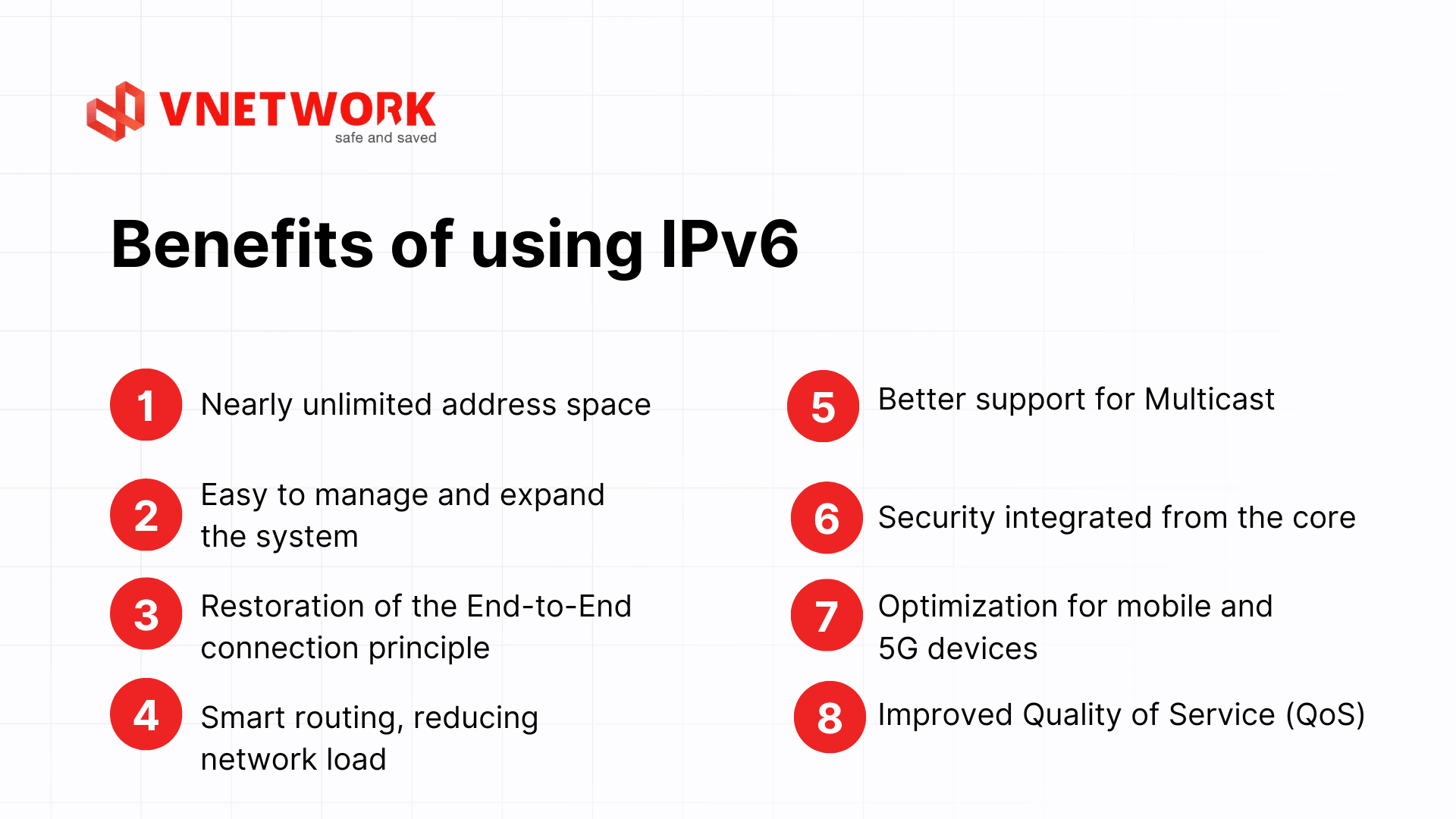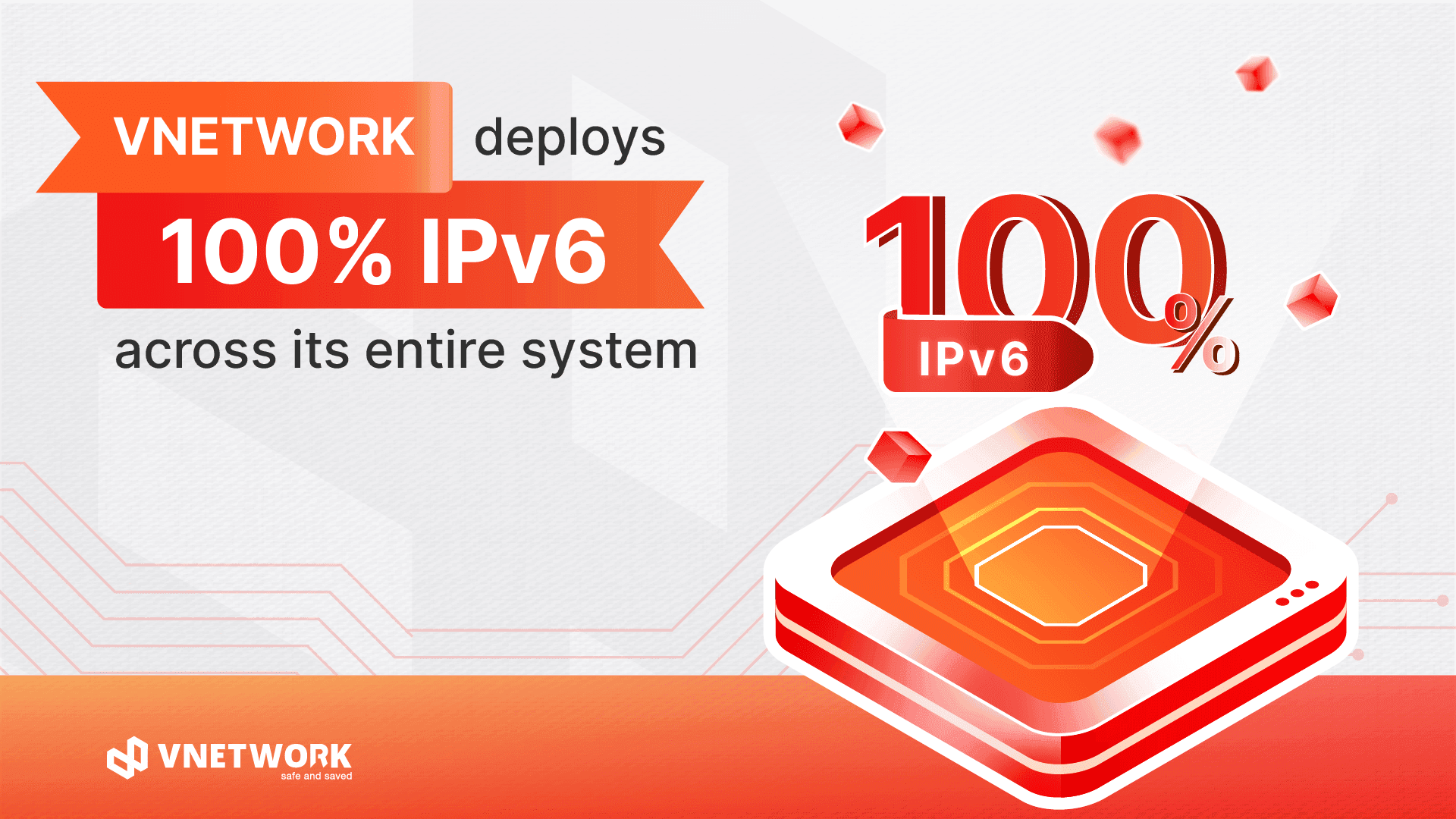What is IPv6?
IPv6 (Internet Protocol version 6) is the latest iteration of the Internet Protocol (IP), designed to succeed IPv4, which underpins much of today’s network infrastructure. Introduced by the Internet Engineering Task Force (IETF) in 1998, IPv6 addresses the critical issue of IP address exhaustion driven by the exponential growth of connected devices worldwide.
Unlike IPv4, which uses 32-bit addresses (supporting approximately 4.3 billion unique addresses), IPv6 employs 128-bit addresses, enabling an astronomical 340 undecillion (340 trillion trillion trillion) addresses. This vast address space ensures every device, from smartphones to IoT sensors, can have a unique IP address, laying the foundation for the Internet of Things (IoT).
Structure of an IPv6 address
- Length: 128 bits, divided into eight groups of four hexadecimal digits.
- Format: Example – 2001:0db8:85a3:0000:0000:8a2e:0370:7334.
- Simplified notation: Leading zeros can be omitted, and consecutive sections of zeros can be compressed with double colons (::), e.g., 2001:db8:85a3::8a2e:370:7334.
IPv6 not only expands address capacity but also introduces technical enhancements that make the Internet faster, smarter, and more secure.
Why was IPv6 developed?
The Internet’s growth has led to an explosion of connected devices: computers, smartphones, IoT sensors, smart cars, security cameras, and more. Each requires a unique IP address to communicate. However, IPv4’s 4.3 billion addresses were fully allocated by 2011.
To cope, network engineers adopted temporary solutions like Network Address Translation (NAT) and private IP networks. These workarounds, while effective, complicate network architecture, hinder security, slow down routing, and limit scalability.
IPv6 was developed to:
- Permanently resolve IP address scarcity.
- Enhance connection performance across devices.
- Integrate robust security with built-in IPsec.
- Simplify network management with automated configuration.
- Support emerging technologies like IoT, 5G, and cloud services.
In essence, IPv6 is not just the next version of IPv4—it is the backbone of the future Internet.
Benefits of IPv6
The differences between IPv6 and IPv4 extend beyond address length, offering superior performance, security, and scalability.

1. Virtually unlimited address space
IPv6 provides an immense pool of addresses, ensuring every device—from laptops to IoT sensors—can have a unique IP. This enables sustainable Internet growth without the constraints of IPv4’s limited address pool.
2. Simplified network management and scalability
With Stateless Address Autoconfiguration (SLAAC), devices can automatically assign themselves IP addresses without relying on DHCP servers. This streamlines deployment and scaling for enterprises managing large network infrastructures.
3. Restoring end-to-end connectivity
IPv6 eliminates the need for NAT, enabling direct device-to-device communication. This reduces latency, improves performance, and ensures more reliable connections.
4. Smarter routing for reduced network load
IPv6 employs hierarchical routing, which minimizes the size of global routing tables. This optimizes traffic management for ISPs and enterprises, enhancing network efficiency.
5. Enhanced multicast capabilities
IPv6 improves multicast, enabling data transmission to multiple devices simultaneously. This is critical for bandwidth-intensive applications like IPTV, video conferencing, livestreaming, and Internet-based broadcasting.
6. Built-in security
IPv6 integrates IPsec, providing end-to-end encryption and authentication. This reduces risks like eavesdropping, man-in-the-middle attacks, and IP spoofing.
7. Optimized for mobile and 5G networks
IPv6 supports modern mobile networks with static addressing and efficient routing, ensuring stable connections in high-density environments like 5G.
8. Improved Quality of Service (QoS)
IPv6’s optimized packet structure enhances data prioritization and processing, ensuring high-quality performance for latency-sensitive applications like online gaming, video conferencing, and real-time data streaming.
IPv6: The foundation for the future of Internet and digital enterprises
As digital transformation accelerates, businesses need flexible, secure, and scalable network infrastructure. IPv6 is more than a technical upgrade—it’s the cornerstone of next-generation digital enterprises. Adopting IPv6 empowers organizations to optimize performance, enhance user experiences, and ensure long-term scalability in the digital era.
1. Enabling sustainable digital growth
IPv6 ensures businesses can scale without worrying about address limitations, seamlessly integrating with emerging platforms and devices.
2. Boosting performance and reliability
IPv6 reduces latency, accelerates service access, and optimizes content delivery—a critical advantage for websites, applications, and cloud systems.
3. Strengthening security and network management
With integrated IPsec, businesses can encrypt data end-to-end, mitigating risks of data breaches. Automated routing and configuration simplify network administration.
4. Enhancing user experience
IPv6 improves access speeds and reduces congestion during high-traffic scenarios, such as marketing campaigns, online events, or large-scale livestreams.
VNETWORK’s full IPv6 adoption
On March 25, 2024, Vietnam’s Ministry of Information and Communications issued Decision No. 377/QĐ-BTTTT, approving the “Vietnam IPv6 Transition Plan, IPv6 For Gov 2024.” The plan aims to transition Vietnam to an IPv6-only environment by 2026, accelerating nationwide adoption.

In alignment with this initiative, VNETWORK, a leader in cybersecurity, CDN and network infrastructure, has fully implemented IPv6 across its systems. This milestone reflects VNETWORK’s commitment to building modern, secure, and high-performance network infrastructure for enterprise clients.
By adopting IPv6 comprehensively, VNETWORK:
- Accelerates connectivity for users domestically and globally.
- Enhances access experiences by minimizing network latency.
- Scales CDN, cybersecurity, and email delivery infrastructure.
- Reinforces its leadership in technology and network security.
VNETWORK also supports a dual-stack IPv4-IPv6 model, ensuring seamless compatibility and a smooth transition for clients.
Conclusion
IPv6 is not merely an upgrade from IPv4—it’s a transformative leap for the global Internet. By fully adopting IPv6 across its IT and CDN infrastructure, VNETWORK solidifies its position as a pioneer in network security and infrastructure in Vietnam.
With robust, high-speed, and secure infrastructure, VNETWORK is a trusted partner for businesses navigating digital transformation.
FAQ: Common questions about IPv6
1. What is IPv6, and how does it differ from IPv4?
IPv6 is the sixth version of the Internet Protocol, succeeding IPv4. It uses 128-bit addresses, vastly expanding capacity compared to IPv4’s 32-bit addresses, while enhancing security and performance.
2. Why transition to IPv6?
IPv4’s global address pool is exhausted, while connected devices continue to proliferate. IPv6 resolves this by offering unlimited addresses, better security, and improved connectivity.
3. Is IPv6 compatible with IPv4?
Yes. Most modern systems support dual-stack configurations, running both IPv4 and IPv6 for a seamless transition.
4. Does IPv6 improve Internet speed?
IPv6 doesn’t directly increase speed but optimizes routing and eliminates NAT, reducing latency and improving access smoothness.
5. How should businesses transition to IPv6?
Partner with IPv6-ready infrastructure or CDN providers, like VNETWORK, to ensure a secure, efficient, and seamless transition.
